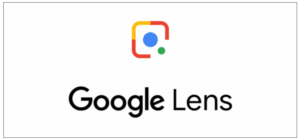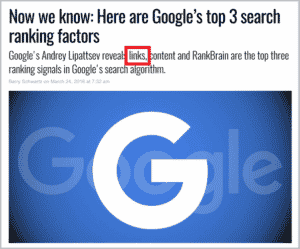Google Lens, a fast-growing technological company, provides Augmented Reality to its three billion monthly users. Google used to be merely a search engine, but it has evolved into much more, with services ranging from Youtube to the latest Smartphones and smart speakers. Google Lens has been introducing cutting-edge solutions that match today’s and tomorrow’s needs.
Google Lens is an AI-powered technology that combines your smartphone camera and deep machine learning to not only identify but also interpret an object in front of the camera lens and provide activities like scanning, translation, and purchase.
Lens was one of Google’s major announcements in 2017, yet it was only available on the Google Pixel when it released. Since then, Google Lens has been added to the majority of Android devices; if you don’t have it, you may get it from Google Play. It is basically a tool that uses image recognition and with Google Assistant, it goes through the real world navigation.
Google Goggles, an image recognition smartphone app, was released in 2009. It was used to do searches using images captured by handheld devices with less than a megapixel camera. Google Lens was created in response to the growing use of photos in communication, and it was designed to satisfy the needs of those who use augmented reality.
Now that we are in 2021, the world of search engines and search engine optimisation is continually evolving and growing. According to recent da, Google’s newest means of searching – Google Lens – is gaining traction. More visual search capacities are desired by over 62 percent of Generation Z and young Millennials.
Despite the fact that the concept and practise of visual search are still in their infancy, it is already proving to be quite effective. Google Lens can recognise over a billion different items, and that figure is growing every day. It can be used for a variety of things, but the most common ones are shopping, identifying landmarks, and visualising language translations. It also has the power to accomplish a great deal more.

Is Google Lens reinventing search?
We live in a time when a single image may communicate a thousand words. Companies should be engaged on such platforms as more and more users choose to connect through visual media. As a result, Google promotes Lens as a solution that caters to people who prefer to “snap over text.”
Traditional search media tend to lose momentum with such consumers. As a result, it makes sense for Google to create and deploy apps that cater to these customers. With the least amount of input from you, the lens is capable of doing precisely that. Perfect for today’s generation of users.
A visual search engine might be a game-changer for e-commerce platforms if it receives positive feedback. Imagine not having to type the object name into Google; instead, you can take a picture of it and get all the information you need!
Future technologies like the lens have revolutionised how we purchase online for e-commerce giants like Amazon and Flipkart. It has also helped in the SEO implementations for digital marketing strategies.
How to use it?
For Android –
You have Google Lens on your phone if you see the Google Lens icon in your Photos, Assistant, or built-in camera app. If none of those apps has the icon, you may still enjoy the fun of visual search by downloading the Google Lens app to your Android device.
If your phone isn’t compatible, the Google Lens app won’t work with your Google Assistant or other apps. The Lens app, on the other hand, allows you to conduct visual searches.
- Open Lens on your android phone
- With your Google Assistant: Say “Ok Google.” At the bottom right, tap Lens.
- On some Android phones, open your device’s Google Camera app > More >Lens.
- If you don’t see the Lens icon, point your camera at an item.
- On your screen, tap the item. To select the text, tap a word, then tap it again and drag the blue dots.
- Tap Speak.
- Ask a question or say a command to find out the result.
For iPhone –
Although there isn’t a Google Lens app for iOS, you can use Google Lens using the Google app:
- From the App Store, get the Google app.
- Select the camera icon in the Google Search bar after opening the Google app.
- To take a photo, point Google Lens at the thing you want to search for and hit the Search icon. The images below will be the search result.
Uses for Google lens
Google claims that the new visual search feature has already been used over a billion times around the world. Just a tap into the lens and people can find answers to a number of questions. Let’s imagine you’re in a restaurant and you’re looking for something to eat. Google Lens can detect popular foods on the menu and highlight them automatically. When you tap on a highlighted item, you’ll get images, restaurant reviews, and reviews on the dish itself.
Lens can read signs to you in the same way it can interpret them. This is a fantastic new tool for the more than 800 million adults throughout the world who struggle with reading and comprehension. Lens can now read whatever is on the page to you in the correct context when you point your camera at a block of text. You can also isolate a specific word to search for it or learn its definition.
- Translate: With Google Translate installed, you can point your phone at text and have it live translated in front of your eyes. In fact, this won’t even need internet connection.
- Smart Text Selection: With Google Lens, you can point your phone’s camera at text, highlight it, and copy it to use on your phone. For instance, consider being able to point your phone at a Wi-Fi password and copy/paste it into a Wi-Fi login screen.
- Smart Text Search: When you highlight text in Google Lens, you can use Google to search for that text. This is useful if you need to search up a word’s definition, for example.
- Shopping: If you see a dress you like while out shopping, Google Lens can recognise it as well as related items of clothes. This works for almost every item you can think of, as well as for shopping and reading reviews.
- Google homework problems: That’s right, you can simply scan the question to see what Google returns.
- Help search around you: Google Lens will recognise and identify your surroundings if you position your camera in the general direction. This could include information about a landmark or information about different types of food, including recipes.
What’s next with Google lens?
Google, being an ever improving and expanding search engine, is going to implement the same with Google lens. There will be constant upgrade in the tool which can help to seamlessly connect useful digital information to objects in the physical world. How amazing it would be if you see an interesting recipe in a French magazine and your phone’s front camera can show the exact same steps of the cooking without making language a barrier!
Similarly, you can detect new flowers, plants, animals, artwork or other things you have never seen before and with the Google lens, find what it is.
Optimising for visual search
The advent of visual search in search engine optimisation has necessitated the importance to optimise for it. Image SEO is the most important factor to consider if you want your content to appear in a Google Lens search result. To do so, concentrate on giving your files distinctive names and adding alt text to every image you wish to rank for visual search results.
Google wants to show picture results from pages with a high domain authority, fresh content, and the image in a prominent position at the top of the page, according to Google. Keeping note of these crucial variables can help your photographs get the highest score possible.
Is Google becoming AI-centric?
Google Lens is Google’s attempt to bring AI into the real world, as well as a strategy to get younger users to embrace emerging types of visual media. This is accomplished through the use of machine learning, artificial intelligence, and computer vision.
The lens is a good platform for younger users to access and utilise as a visual search engine because of their penchant for instant social media networks.
Google made a wise decision by limiting lens availability to Google Photos, as it is one of the most popular Google apps, with a user base of half a billion people in less than two years.
Google is preparing for the future of consumer technology and computing as a whole with Lens, Home, and a greater concentration on AI.
Other digital behemoths, like as Amazon, have ridden this wave with their own AI Alexa and home device Echo. Microsoft has made its influence felt as well, with Cortana becoming available on an increasing number of devices.
These technologies, which include machine learning and artificial intelligence, have swept the consumer electronics sector. It is only logical for businesses to invest in AI and concentrate on a future of computing that is less device-centric.
What is the bigger picture?
Google Lens, which combines augmented reality and computer vision, is a method for Google to lead us into the future of technology and show us a peek of what’s to come. The concept of lens is based on Google’s original efficiency methods, which propelled it to stardom and helped it become the most commonly used search engine in the world. Machine learning, artificial intelligence, and computer vision are used to run Google Lens. Lens attempts to decipher your photos in order to deliver useful and real-time information to your screens with no effort on your part.
Most firms must take into account the technological shift from previous user input techniques to newer machine recognised computing. Future devices must be able to observe and understand the world in the same way that we do now, without the need for user input.







Great content! Keep up the good work!